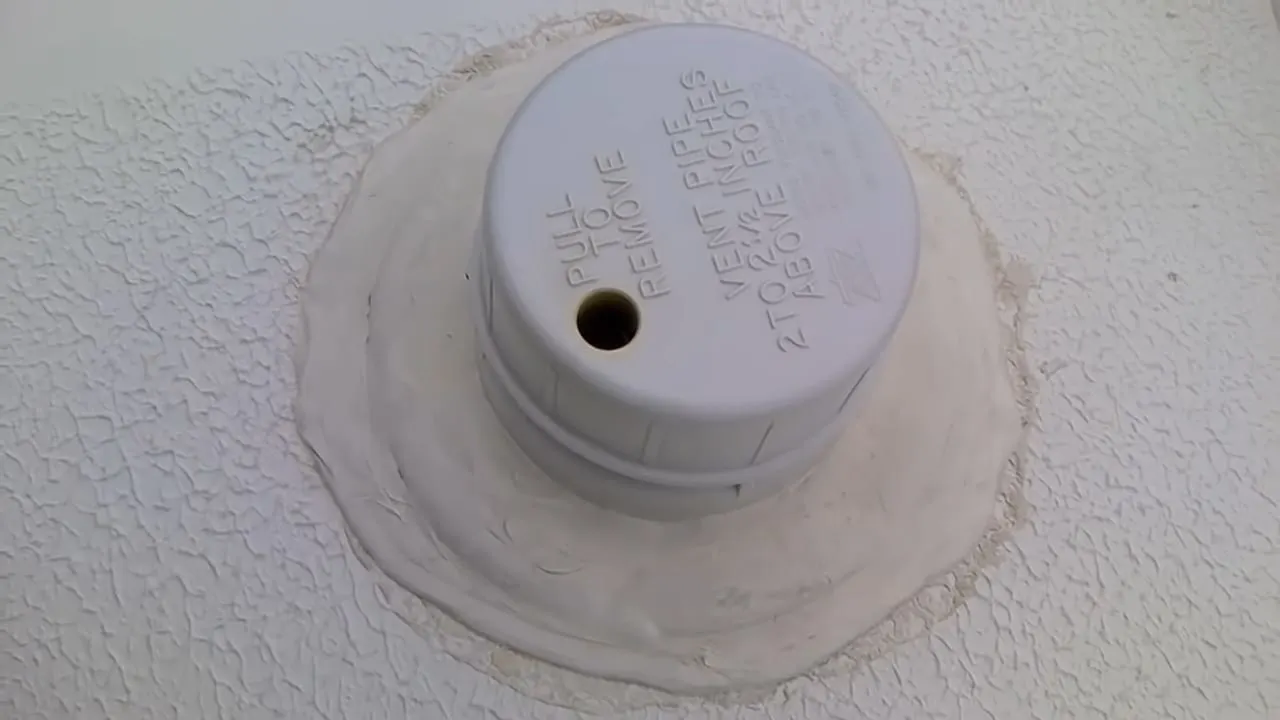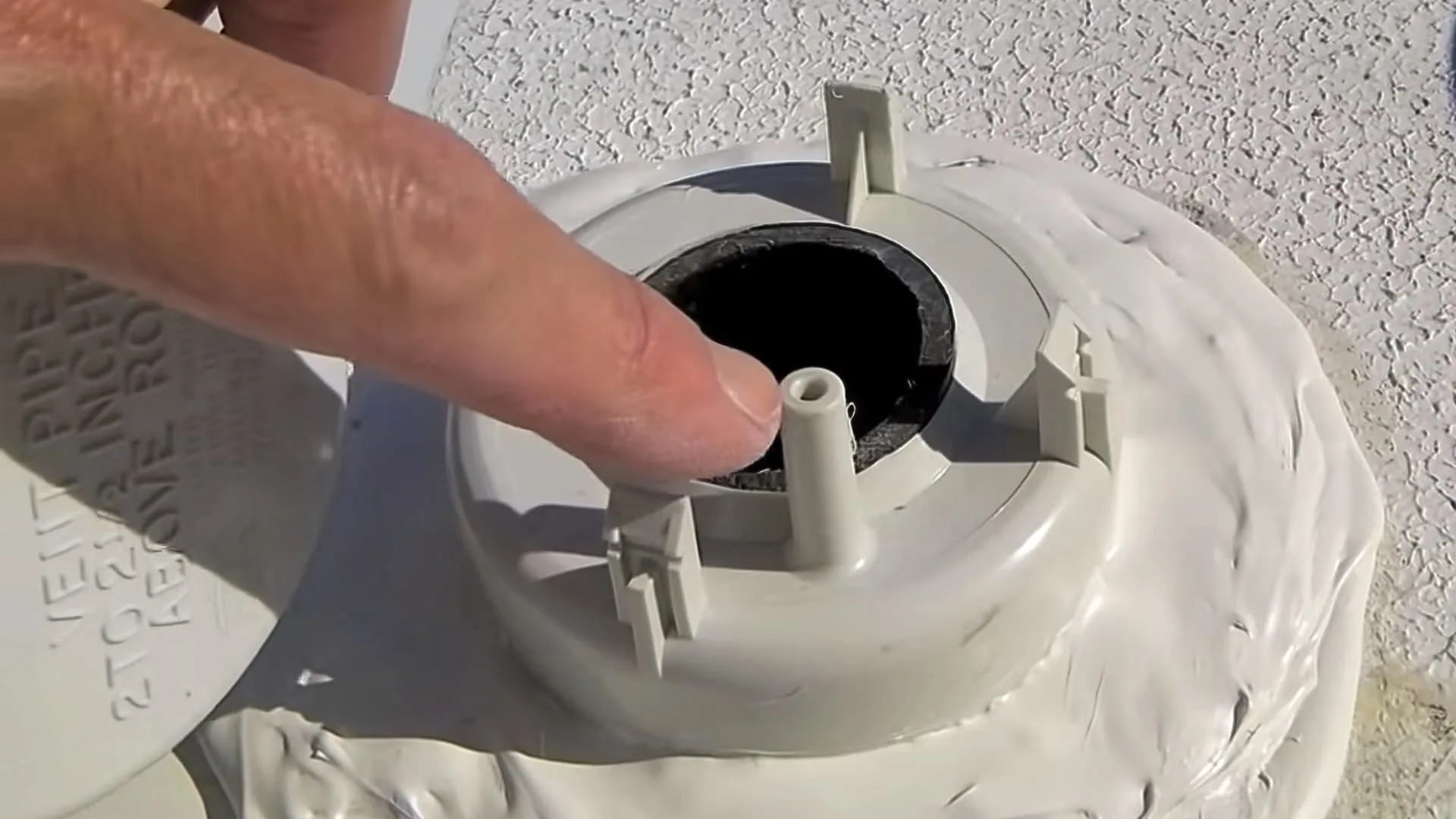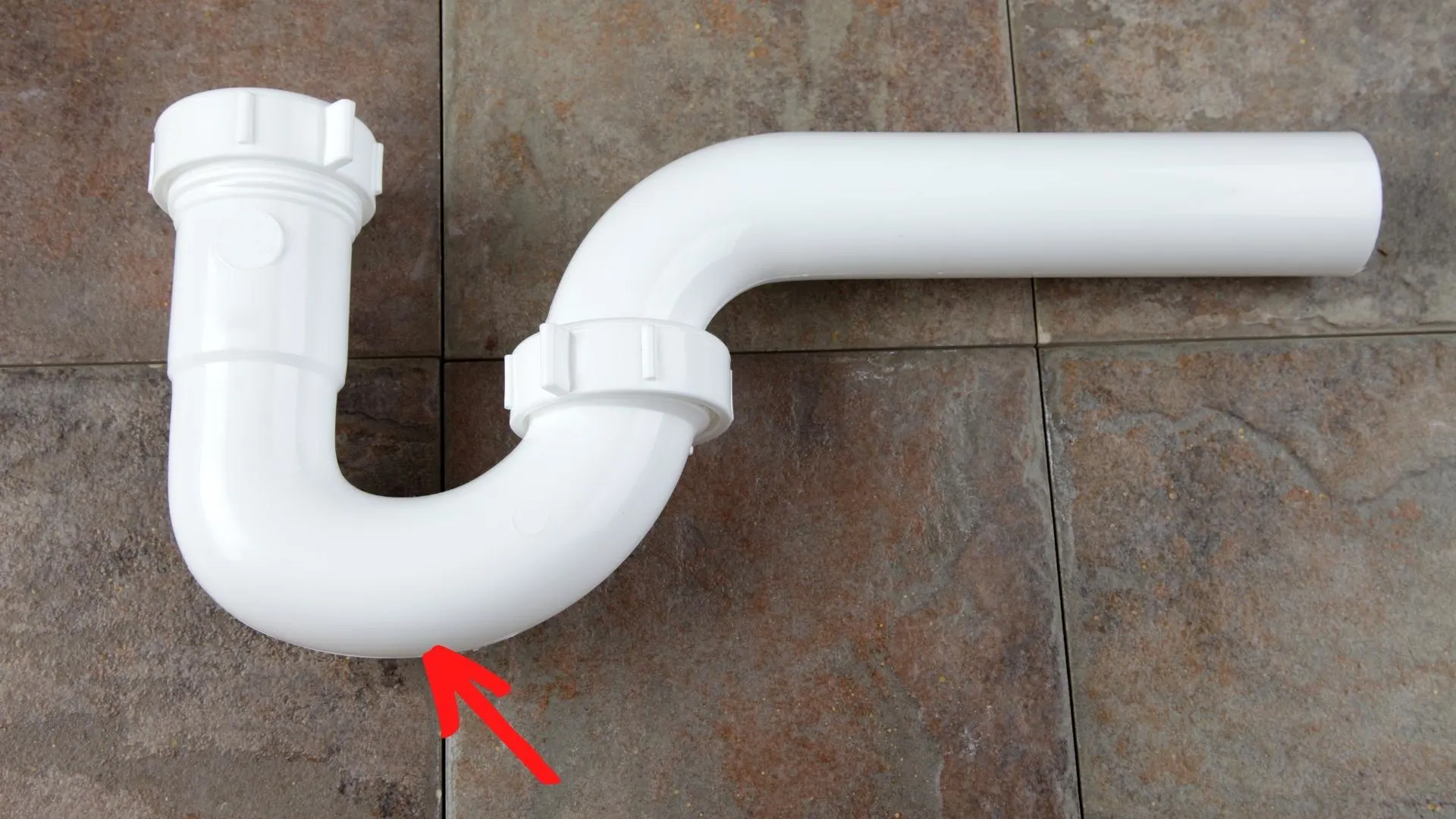A clogged shower drain is no one’s idea of a good time. If you’re showering in your RV and you’re standing in a couple of inches of water – or if the water just isn’t draining as quickly as it should, you’ve got an issue that needs to be resolved. This can happen to the best of us for a variety of reasons, so let’s dig in and learn how to unclog an RV shower drain!
Why Is the Shower In My RV Not Draining?
Your RV shower drain could be clogged for any number of reasons.
Let’s take a look at the most common issues that lead to a clogged RV shower drain.
Your gray water tank is full.
It’s likely that your RV’s tub or shower drain is the lowest drain point in your RV. If that’s the case in your RV, then your shower floor is the first place where you’ll see water backing up if your RV gray water tank is full/overflowing.
If you’ve got a clogged or backed up shower drain, the first thing you’ll want to do is empty your gray tank (or make sure it isn’t full). If your gray tank is full, the gray water is likely to start backing up into your shower (or a sink in some cases).
The first thing you may notice is a slowly draining shower. If you have that issue, jump immediately to the gray tank to make sure it isn’t full.
And don’t count on your tank sensors to give you accurate information. For a whole lot of reasons, they’re not always reliable. For more information, take a look at how your RV holding tank sensors work, as well as four ways to clean your RV tank sensors. You may also need to know how to calibrate your RV tank monitor.
Meanwhile, emptying your gray tank is the best way to make sure it isn’t full.
For a quick primer on how to empty your RV black and gray tanks (first the black, then the gray!), check out our RV Holding Tank Dumping 1-2-3 video:
The drain from the shower or tub could be clogged.
Another possible explanation for a clogged RV shower drain is – well – a clogged RV shower drain! The line running from your RV shower or tub to your gray water tank could actually be clogged with hair and other debris.
The first step would be to remove the drain cover if possible (some are held in with a screw or two… others are just pressure-fit into the opening). With it removed, you should be able to see if there’s hair and/or soap scum buildup blocking the flow of water and remove it manually.
If that doesn’t work, or you can’t remove the drain cover, you can try to unclog the drain using a solution of Dawn dishwashing liquid (breaks up grease and particles), and you can even add some Calgon to the mix if you happen to carry it. Use hot water from your tap but never use boiling water as it can damage pipes and weaken connections.
You can also pick up a simple plastic drain snake or drain cleaning tool at any hardware or big box store and try feeding that down into the p-trap to move a clog through to the gray tank. But be cautious using any sort of snake, auger, or even a plunger, because you can cause additional problems.
IMPORTANT NOTE: many RVs, particularly smaller ones that don’t have the height to allow room for a standard P-trap beneath the shower, use what’s called a Hepvo waterless waste valve. These valves prevent tank odor from returning through a drain by using a self-sealing membrane that allows water to drain down, but no air to return. These valves require extra care to avoid permanently damaging them. DO NOT us a drain cleaning tool or snake on these valves. You will either need to rely on other techniques or will have to remove the Hepvo valve first.
Though some people use it, we don’t recommend using chemical drain cleaners (like Drano, bleach, or any other harsh chemicals) to unclog an RV drain. These products can damage your plumbing and seals, and even your holding tanks… leading to more/worse problems down the road.
Plumbing vents could be blocked.

If your RV’s plumbing vent is clogged by debris or insect nests, this will reduce or prevent airflow and could cause sewer odors inside your RV.
If your RV’s plumbing vent (on the roof) is blocked by an insect nest or other debris that accumulated in it, the regulation of the air pressure in your holding tanks may be interrupted. These vents exist to move gas and odor out of your RV, but if they’re blocked they can also cause water not to drain properly.
This would likely also affect your sinks as well as your shower. So if your shower isn’t draining properly (or if you’re hearing odd gurgle-like sounds from your shower drain while showering), or if your sinks are draining slowly, or if you’re experiencing a strong sewer smell inside the RV, be sure to check out your plumbing vent as this could well be the culprit.
The solution here, of course, is to unblock the vent. To do this, you’ll need to head up to your roof to check the vent for an obvious blockage that you can clear. If this proves fruitless, you may want to try running a garden hose up to the vent and running some water into the opening. You can also use a plumber’s snake or plastic hand snake to carefully dislodge a clog in the vent tube.

On this type of plumbing vent, once you’ve removed this single screw holding the cap to the vent pipe housing, you can check the vent pipe for any blockages.
The P-trap below the shower can get clogged.
A p-trap is a U-shaped pipe that holds some water for the purpose of sealing out sewer gas. You can easily see p-traps under your sinks, but there’s also a p-trap under your shower for the same purpose. It’s usually located directly beneath the shower’s drain hole.
Like any p-trap, shower p-traps can get clogged, preventing the proper drainage of water from the shower.
To prevent these types of clogs from occurring, using a filter over your shower drain is a good idea. Lots of hair goes down the shower drain every day, and eventually can clog the p-trap. Preventing the clog is important. But if you’ve already got a clogged p-trap, there are a few things you can try to clear it.
Here again, you can use Dawn dishwashing liquid and hot (NOT boiling!) water plus some Calgon if you happen to have it on hand. You can even add a little white vinegar to the solution to help break up any soap scum.
You may also be able to remove the drain cover and, after using some hot water and dishwashing liquid, (or for a very stubborn clog some baking soda and a bit of white vinegar), gently use a brush or stick to work the clog loose.

This is an example of a p-trap. The red arrow points to a part of the p-trap where clogs can sometimes occur.
Your shower drains into the black water tank.
This is last on the list for a reason. It isn’t very often the reason for a clogged RV shower drain. However, it IS possible. There are some RVs (the Winnebago Rialta comes to mind) in which the gray water drains into the black tank.
If this is the case, then when your RV’s black tank is full – you guessed it – that mixture of black and gray water will back up into your shower. (Look online and you’ll see many accounts of Rialta owners learning the hard way that their gray water drains into their black tanks!) This is also the case with some other vintage RVs and even a few newer rigs as well.
So, check your owner’s manual! Don’t find out when you’re standing in a shower full of – ummm – ???? water.
Where Does My RV Shower Water Go?
As long as you’re not the owner of a Winnebago Rialta or another RV that drains gray water into the black water tank on purpose, your shower water most likely drains into your gray water tank. That’s where the water from your sinks and indoor shower drains.
Again, we direct you to our post telling you all you need to know about your RV gray water tank.
Can I Use Drano In My RV Shower?
Honestly, we don’t recommend it. It’s best not to use anything caustic in your RV drains because these strong chemicals can damage your RV plumbing. They can damage the pipes themselves, the fittings, valves, and gaskets.
But, if you’ve tried everything else and haven’t had any luck, you may not have any other choice. Just be sure that you don’t leave it in contact with any components of your RV’s plumbing system (pipes, holding tanks, waste valves, etc) for longer than necessary, and flush it out of the system with plenty of cold water.
Can I Pour Boiling Water Down My RV Sink or Shower?
Many household drain clog solutions recommend pouring boiling hot water down a clogged/slow drain. The idea is to loosen and break up any grease/soap scum that has constricted the pipe and reduced the flow of water.
But, on RV’s, the same logic applies to boiling water as we noted above for caustic substances. Boiling water can damage your RV’s plumbing and should be avoided.
Combining hot water from the tap with dishwashing liquid, etc., is acceptable. But boiling water shouldn’t be used in your RV’s plumbing system.
Bonus: Tips for Your RV Shower Experience
Be sure to check out our tips for how to take an awesome RV shower, with 20 years of RV showering experience behind us.
If your RV shower head is clogged (as opposed to your RV shower drain), have a look at our post to resolve that issue easily.
And if your problem is a dripping shower, you can fix that, too!
Once you’ve taken care of any issues that may have been plaguing your RV shower experience, get your RV’s shower ready to roll and enjoy the luxury of traveling with your own private shower.
Geek Out with Us Every Week
Join our newsletter to learn about all things RV-related. Every week we offer free tips, tricks, product reviews, and more to our online community of RVers. So, whether this is your first time on the road or you’re a seasoned expert, we’d love for you to geek out with us!


Drew
Saturday 2nd of April 2022
You can also use a Zipit draing clearing tool. They're good at clearing hair out of drains and work quickly. If you don't have one take a wire coat hanger and cut it down to about 2 feet. Then just bend the end into a small hook- works almost as well.
Rick Dowling
Saturday 2nd of April 2022
Hi guys,
Thanks as usual for the article. I’m surprised you didn’t mentioned Hepvo valves that may be used in lieu of P traps in some RVs. Using any kind of tool to push down one of these could be the beginning of the end for these valves. Given they are usually used in very tight quarters they are no fun to replace. Ask me how I know.???? Thanks again guys!!
TheRVgeeks
Saturday 2nd of April 2022
Good point on the HepVo valves, Rick. We did, indeed, forget about them... and their common usage for shower drains in RVs with less room. You DEFINITELY need to be aware if that's the drain you have so you don't damage it trying to clear a blockage.
Mark Eckman
Saturday 2nd of April 2022
Agree on the Hepvo valves that work like a pair of lips squeezing together to make a seal. If you use a snake or one of those plastic hair clog things, you can easily cause damage to the flexible diaphram in the unit.
Shower p-traps are typically on the bigger class A where there is significant space and height for the shower drain. The rest of us have the Hepvo valves.